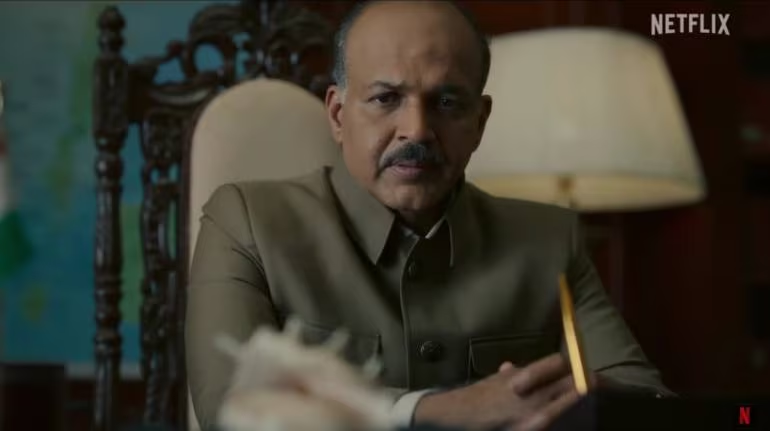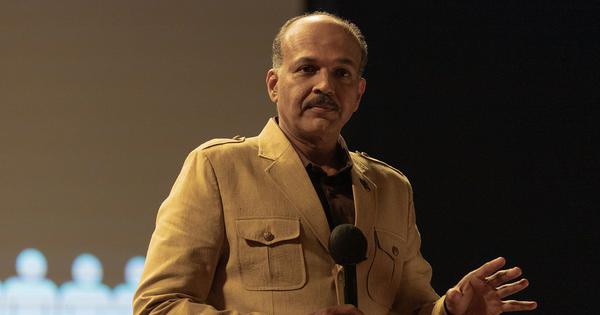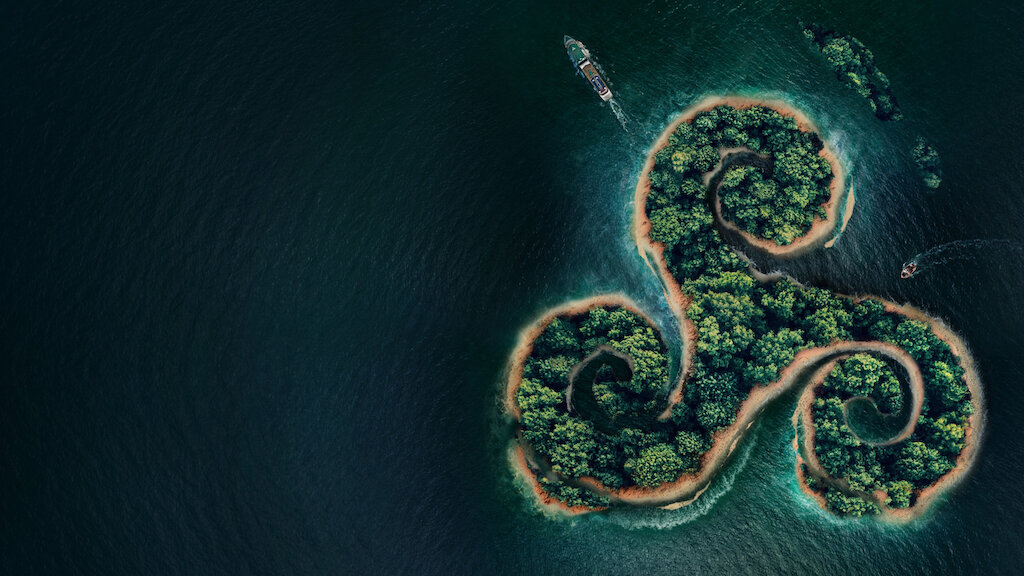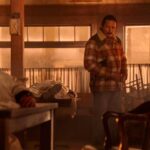Kaala Paani Ending Explained – Welcome to a thrilling journey of unraveling the intriguing ending of “Kaala Paani,” a remarkable Indian web series that captivated audiences with its suspense and complex characters. Directed by Sameer Saxena and Amit Golani, the show boasts a stellar cast, including Mona Singh, Ashutosh Gowariker, Amey Wagh, and more. Aired on Netflix, this series takes us to the beautiful yet ominous Andaman and Nicobar Islands in the year 2027.
Kaala Paani Plot Summary
The story begins with the Andaman and Nicobar Islands preparing to celebrate the Swaraj Mahotsav, a grand New Year festival. However, a mysterious and deadly epidemic, known as LHF-27, looms over the islands, endangering the lives of its inhabitants. Dr. Soudamini Singh (Mona Singh), the fearless leader of the island’s medical team, senses the impending danger. She tries to sound the alarm, but the authorities, led by the cunning Sub-divisional police officer (SDPO) Ketan Kamat (Amey Wagh), are more concerned with the festival’s success.
As the festival unfolds, so does the epidemic, casting a dark shadow over the islands. People fall ill with symptoms like fever, coughing, and mysterious dark spots on their necks. Dr. Singh and her new recruit, Dr. Ritu Gagra (Radhika Mehrotra), embark on a race against time to find a cure and save lives. Little do they know that this journey will lead them to confront deep moral dilemmas and challenging decisions.
Kaala Paani Ending Explained: A Deeper Dive into the Island’s Fate and Moral Dilemmas
In the heart-pounding conclusion of “Kaala Paani,” viewers are taken on a roller-coaster ride filled with moral dilemmas, hidden secrets, and characters pushed to their limits. As the story unfolds, it becomes evident that the fate of the Andaman and Nicobar Islands hangs in the balance. Here, we delve deeper into the intricacies of the series’ ending, shedding light on the moral complexities faced by the characters.
Admiral Zibran Qadri, portrayed by the accomplished Ashutosh Gowariker, embodies the central moral dilemma of the series. As the Lieutenant Governor of the Andaman and Nicobar Islands, he is tasked with the challenging decision of being a good person or a true leader. This choice carries monumental consequences, as the lives of thousands depend on it. His character undergoes a transformation, raising critical questions about the nature of leadership, ethics, and the greater good.
A crucial aspect of the story centers around the indigenous Oraka tribe. These remarkable people, possessing ancient wisdom passed down through generations, hold the key to understanding and combating the LHF-27 epidemic. The Orakas’ unique sensitivity to subtle environmental changes makes them invaluable in the fight against the disease. Their involvement introduces a thought-provoking ethical question: Is it justifiable to sacrifice a smaller group of people to save a larger number?
This ethical quandary, known as the “trolley problem,” forces characters and viewers alike to confront challenging decisions. Is it morally acceptable to endanger the indigenous tribe, who are the island’s best hope for a cure, for the greater good of the festival’s success? The series beautifully weaves this moral dilemma into the narrative, making it a central theme that lingers throughout.
Characters like Santosh, a devoted father and husband played by Vikas Kumar, add an emotional anchor to the story. As he grapples with life-altering decisions and the safety of his family, viewers are drawn into his internal struggles. This relatable aspect of the story prompts us to consider how we might act when faced with impossible choices, echoing the age-old question: What would you do to protect your loved ones?
While the characters’ decisions are at the forefront of the moral dilemmas, the story also asks more profound questions about the nature of humanity. Can people change their inherent nature, or are they forever trapped by their past actions? The concept of “Kaala Paani” is introduced as a metaphorical representation of isolation and entrapment. The characters must decide whether they can break free from this confinement and make choices that transcend their past.
In “Kaala Paani,” the island’s stunning yet ominous backdrop becomes a character in its own right. The cinematography, executed by Dhananjay Navagrah, Barny Crocker, and Ewan Mulligan, masterfully captures the beauty and foreboding atmosphere of the Andaman and Nicobar Islands. The visuals provide depth to the storytelling, immersing viewers in a world that is both captivating and haunting.
As the story unfolds, it becomes clear that the “Kaala Paani” ending is not just about resolving the epidemic but also about introspection. It challenges us to reflect on our own lives and the choices we make. Can we break free from the constraints of our past actions, or are we, like the characters in the series, trapped by the metaphorical “Kaala Paani” of our own making?
“Kaala Paani” offers a gripping narrative, exploring the complexities of human nature, the ethics of leadership, and the sacrifices made for the greater good. While it occasionally leans on narrative devices like the scorpion-frog allegory, these elements contribute to the overall tension of the survival drama.
What Was The Attavus Project?
A pivotal moment in the series revolves around the Attavus Project. Ketan discovers a shocking link between the project and the LHF epidemic plaguing the islands. The project’s original goal was to build a helipad near Jenkins Lake, a mere photo-op to welcome their CEO, Brandon. However, things took an unexpected turn when Brandon sent his wife to inaugurate the Jenkins pipeline instead, causing the project to be abandoned midway.
In a surprising twist, it’s revealed that there was no sinister motive behind the project; they simply occupied the land without considering its environmental significance. Just like Ketan’s initial suspicions, Mr. Wani and ATOM were acting in their own interests, unaware of the land’s role in fighting the epidemic.
Why was Ritu Hopeful About Finding the Mysterious Plant?
Amid the chaos and desperate search for a cure, Dr. Ritu Gagra remains hopeful. Her optimism centers on the mysterious Echinacea plant, which the authorities believe to be extinct. They are determined to extract a peptide from the Orakas, an indigenous tribe, to develop a cure, even though this procedure could lead to the tribe’s extinction.
Ritu’s hope hinges on a lead provided by Jyotsna, who suggests the existence of Echinacea plants on an island. Ketan, driven by his feelings for Ritu, escorts her to the ATOM headquarters to join the team working on the cure. However, when Ritu decides to venture out to find the Echinacea plants, Ketan lets her go.
What moral dilemmas do the characters in Kaala Paani face as they grapple with the deadly epidemic, and how does it affect their decisions?
The characters in Kaala Paani are confronted with profound moral dilemmas as they navigate the deadly epidemic. Admiral Zibran Qadri must choose between being a good person and a true leader, with far-reaching consequences. Santosh, a father and husband, wrestles with life-altering decisions. These dilemmas force them to question their responsibilities and ancestral burdens, creating a sense of uncertainty that hangs over the island.
How does Kaala Paani explore the theme of breaking free from one’s past actions and changing the course of one’s life?
Kaala Paani delves into the theme of breaking free from the past. The characters are challenged to confront their inherent natures and decide whether they can escape the metaphorical “Kaala Paani” that symbolizes isolation and entrapment. It prompts viewers to ponder if individuals can truly change or if they are prisoners of their past actions, a question that resonates throughout the series.
“Kaala Paani” offers a suspenseful and thought-provoking journey, not only through the captivating narrative but also into the depths of human nature. As the series concludes, the fate of the islands remains uncertain, and the characters are forever changed by their experiences. It challenges us to reflect on our own choices and the fundamental nature of humanity. Are we bound by our past actions, or can we break free from the metaphorical “Kaala Paani”?
Read Also: Is Jawan (2023) Based on a True Story? Explained!









